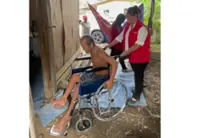Stroke can kill, so act quickly and get the patient to the hospital fast.
Jane, 52, struggles to make her way up the two flights of stairs.
She feels like she has aged tremendously since being infected with Covid-19 a few months back.
Already a subscriber? Log in
Save 30% OFF The Star Digital Access
Cancel anytime. Ad-free. Unlimited access with perks.





